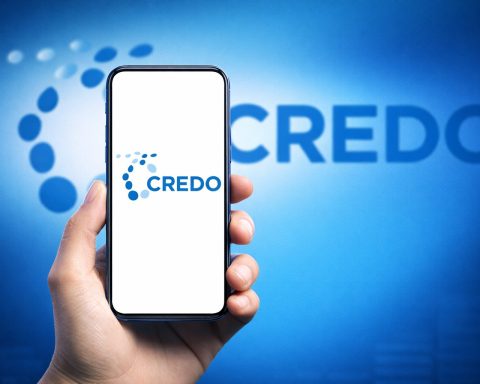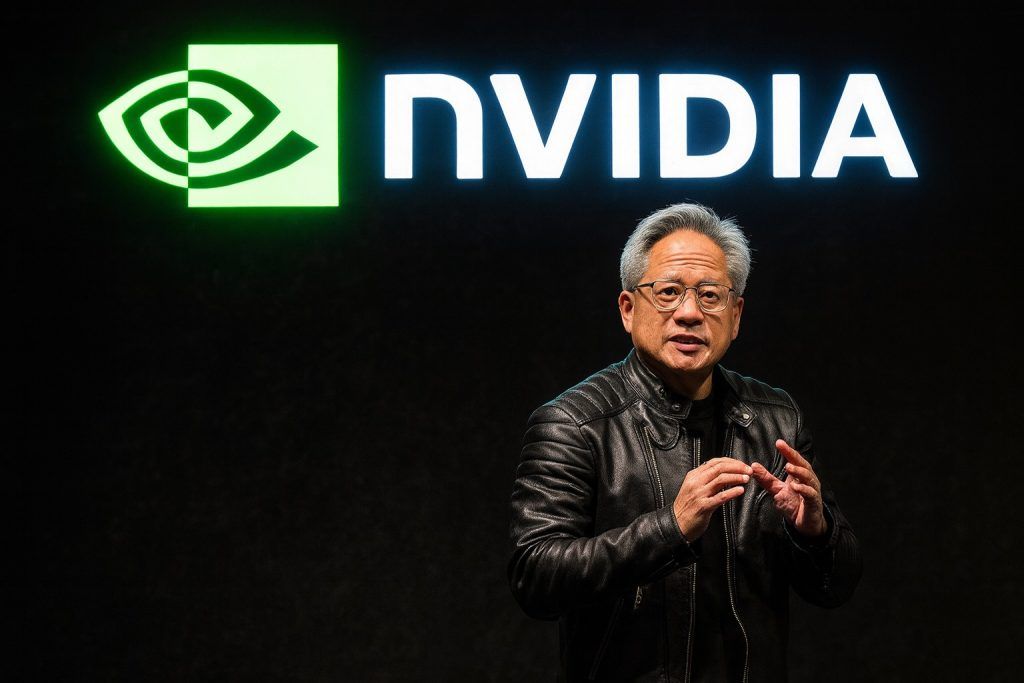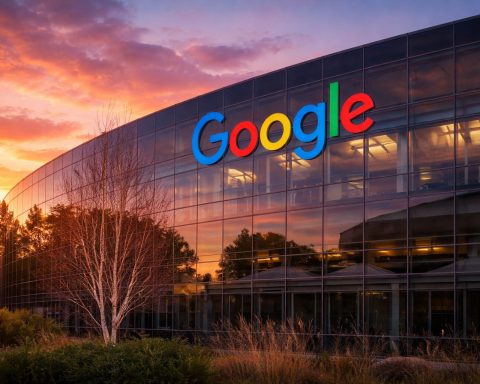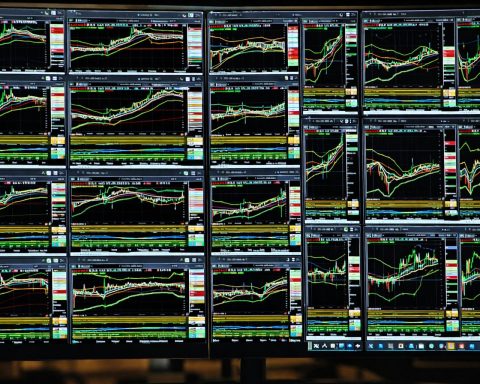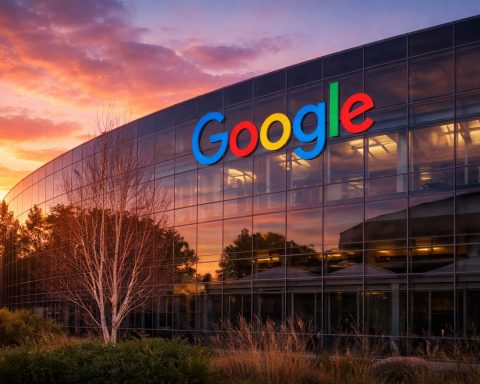- Alphabet’s reshuffle: Google’s parent company Alphabet confirmed plans to spin off its Verily life sciences unit, aiming to let it operate independently (via sale or spinoff) after years of decoupling it from Google’s infrastructure [1] [2]. In tandem, Google laid off over 100 employees – largely in its Cloud division’s user experience research and design teams – as part of cost-cutting and an AI-focused restructuring [3] [4].
- Antitrust battles intensify: In a U.S. federal court, Google spent early October defending against a potential breakup of its advertising technology business. Company witnesses argued that forcing the sale of its AdX ad exchange would be wildly complex – likening the task to “going to Mars” – and could disrupt the $200+ billion digital ads market [5] [6]. Regulators, however, pressed for strong remedies to restore competition, mirroring parallel moves in Europe after a recent €2.95 billion EU fine (which came with a breakup warning if Google doesn’t comply) [7] [8].
- New Pixel hardware with AI everywhere: At its Made by Google 2025 product event, Google unveiled the Pixel 10 and Pixel 10 Pro smartphones – both featuring a new Tensor G5 chip and “AI everywhere” in the user experience [9]. The Tensor G5 is built on a 3nm process, delivering 34% faster CPU performance and a 60% more powerful TPU (AI processor) than the previous generation [10], enabling advanced on-device AI features. Google also introduced the Pixel 10 Pro Fold, its first fully dust-resistant foldable phone, and a Pixel Watch 4 with an even greater focus on AI-driven health and fitness coaching [11].
- Smart home goes Gemini: On October 1, Google’s Nest smart home lineup got a major refresh with AI at the core. New Nest Cam indoor and outdoor cameras and a Nest Doorbell (all shooting in 2K HDR) were revealed, all equipped with Google’s latest Gemini AI assistant [12]. This on-device AI powers “contextual alerts” – for example, instead of a generic motion notification, the camera can recognize that “a FedEx delivery driver is placing a package on the porch and walking away,” explained Anish Kattukaran, Google’s Nest product chief [13] [14]. Users can converse with the Gemini assistant for personalized routines (e.g. “make my home feel safer” prompts it to suggest automatically locking doors and turning on lights) thanks to Gemini’s more human-like, multimodal reasoning capabilities.
- Alphabet stock nears record high: Alphabet’s stock (NASDAQ: GOOGL) has surged about 29% in 2025, handily outperforming the NASDAQ 100’s ~17% gain [15]. Investor optimism is fueled by Google’s advances in generative AI and multimodal search, which are reinforcing its position as a leader in the AI race [16]. In early October, Alphabet’s market capitalization briefly crossed $3 trillion, a milestone achieved by only a few tech giants to date [17]. This rally was bolstered by a favorable court ruling in an earlier antitrust case that spared Google from harsh structural remedies (a judge rejected calls to force the sale of Google’s Chrome browser) [18], easing regulatory overhang. Wall Street analysts have been hiking their targets – one prominent analyst raised his target to $295 per share – citing Alphabet’s diversified business (spanning Search, Cloud, YouTube, and AI products) and its “leadership in generative AI” driving future growth [19].
- Waymo’s 5-year ride and road ahead: Alphabet’s self-driving car unit Waymo marked five years since launching the first robotaxi service to the public (in Phoenix in October 2020) [20]. As of October 2025, Waymo operates driverless ride-hailing services in five U.S. metro areas (Phoenix, San Francisco, Los Angeles, Austin, and Atlanta) and has plans to expand to Miami, Washington D.C., and Dallas in 2026 [21]. The milestone comes amid growing pains: a Waymo vehicle in Atlanta was caught on video breezing past a stopped school bus – an incident under investigation after it violated a traffic rule [22] [23]. Waymo acknowledged the mistake and noted its cars are still learning, while emphasizing that its data shows significantly fewer serious injuries compared to human drivers [24]. Safety experts urge that autonomous vehicles be held to a higher standard; former NTSB chair Robert Sumwalt cautioned that before driverless cars become mainstream, companies must “make sure that they are implemented properly” to avoid dangerous errors [25].
- Other Alphabet ventures: Outside the spotlight, Alphabet’s “Other Bets” are progressing under pressure to justify themselves. Wing, Alphabet’s drone delivery subsidiary, announced expansions of its drone network in partnership with Walmart, moving beyond pilot phases into a commercial rollout. By scaling from a pilot in Dallas to operations at 100 Walmart stores across states like Texas, Florida and Georgia, Wing is on track to enable millions of drone deliveries in the coming year [26] [27]. Wing’s CEO Adam Woodworth said the company is “decidedly out of the pilot…phase and into scaling up this business” as it works to keep costs low while multiplying flights [28]. Meanwhile Google DeepMind – the AI research arm – introduced upgraded Gemini Robotics 1.5 AI models aimed at improving how robots reason and perform multi-step tasks, underscoring Alphabet’s intent to extend AI leadership into robotics [29]. And on the social front, YouTube (a key Google property) began rolling out an AI-powered dubbing tool (built on Google’s Gemini AI) to let creators automatically add multi-language audio tracks to videos – a move that early testers found boosted their international viewership by over 25% [30] [31].
Corporate News: Leadership, Legal & Strategy
Early October saw Alphabet tightening its corporate belt and focus. The company initiated a fresh round of layoffs mainly in its Google Cloud division, eliminating over 100 positions in user experience research and design teams [32]. These roles were responsible for analyzing user behavior to inform product design, but were deemed non-critical as Google reallocates resources toward AI development. Many affected employees were offered a chance to find other roles internally by year’s end, but the cuts reflect CEO Sundar Pichai’s drive to “be more efficient as we scale up so we don’t solve everything with headcount” [33]. Notably, Google has also streamlined management layers this year and even offered voluntary exit packages in some units [34] – all part of what observers call a “leaner Google” strategy to rein in costs and keep pace in the AI race.
Alphabet’s organizational shake-up also extends to its structure. In bombshell testimony on October 3, a Google executive confirmed plans to spin off Verily, the health-tech subsidiary under Alphabet [35] [36]. Verily has been part of Alphabet’s “Other Bets” portfolio, working on life sciences and healthcare projects. According to Heather Adkins, Google’s VP of Security Engineering, Verily spent the past two years untangling its operations from Google – migrating onto its own technical infrastructure – so that it “can be sold or spun off” as a fully independent company [37] [38]. “The idea is to have it no longer be an Alphabet entity,” Adkins said on the stand [39] [40]. Alphabet plans to remain a major shareholder but wants Verily to attract outside investors and stand on its own feet [41] [42]. This marks a significant strategic shift: under Alphabet’s new President and CIO Ruth Porat, the conglomerate has been pushing its “Other Bets” (from Verily to Waymo and more) to prove their viability or become independent startups, rather than indefinitely relying on Google’s funds [43]. In Adkins’ words, Verily’s research is “no longer something we see as part of our core business” [44] – signaling Alphabet’s intent to refocus on areas closer to its core competencies.
On the legal and regulatory front, Google’s battles with antitrust enforcers escalated during this period. In a Virginia courtroom, the remedy phase of the DOJ’s antitrust case against Google’s ad tech business unfolded in dramatic fashion [45] [46]. Judge Leonie Brinkema had already ruled in August that Google illegally monopolized key digital advertising markets [47]. Now, the debate turned to how to fix that. The U.S. Justice Department urged a “surgical” solution: force Google to sell off its AdX ad exchange and possibly parts of its ad server (DoubleClick for Publishers) to break Google’s dominance [48] [49]. “It’s the only way to prevent Google from finding new paths to dominance,” DOJ lawyers argued [50]. Google, unsurprisingly, fought back hard. The company lined up witnesses who testified that separating AdX from Google’s integrated ad infrastructure would be technically nightmarish – an engineering director described it as “going to the moon is simpler than going to Mars” in terms of difficulty [51]. Another expert likened Google’s ad database to “the Michael Jordan” of systems – irreplaceable and one-of-a-kind [52] – suggesting that a divestiture could degrade or disrupt the ad platform. Google warned that small publishers might suffer degraded ad services and the whole digital ad market could be shaken by an forced breakup [53] [54]. Judge Brinkema appeared skeptical of any remedy that lets Google retain its dominance; when Google’s economist argued they could keep their monopoly power but promise to play fair, the judge shot back, “which is…inconsistent with the concept that some monopoly power can continue” [55].
The stakes are enormous for Google: its ad tech stack still contributes heavily to revenue and gives it a 50%+ share of the display ad exchange market [56]. As such, Google proposed behavioral remedies instead – offering to integrate with open-source alternatives (like Prebid) and to abandon certain ad auction advantages (“first look” and “last look” privileges that the court deemed anticompetitive) [57]. A Google ad exec even said the company is “very open to making a formal commitment” not to self-preference its own tools [58]. But Google stopped short of conceding on core money-makers – notably, its witness refused to commit to lowering the 20% revenue cut Google takes on AdX transactions, a fee the court found was inflated by monopoly power [59]. Outside experts note that both U.S. and EU regulators are now aligned in seeking structural changes. In fact, just weeks earlier (September 2025), the European Commission slapped Google with a record €2.95 billion fine for abuses in ad tech and gave Google 60 days to come up with a plan – or face an EU order to break up its ad business entirely [60] [61]. That deadline falls in November, making Europe likely to act before the U.S. trial concludes [62] [63]. However, political cross-currents complicate matters: the EU’s penalties drew threats of retaliation from President Trump, injecting geopolitics into the antitrust mix [64]. For Google, the convergence of global regulators signals a pivotal moment – one that could reshape its business. The trial is ongoing through October, and whichever remedy is imposed (if any) will set a precedent for Big Tech oversight going forward. Google’s position, as summed up by its lawyer, is that any drastic unwind of its ad products would be akin to “unraveling a tightly woven fabric” of systems [65] – an argument aiming to dissuade courts from radical action. Regulators, meanwhile, appear determined to ensure Google cannot simply leverage its dominance in new ways if allowed to stay whole [66].
On the leadership front, there were no high-profile executive shake-ups at Google between Oct. 1–10. (Alphabet’s longtime CFO Ruth Porat had already transitioned to a new role earlier in the year, and Anat Ashkenazi has been serving as the new CFO since mid-2024.) However, the tone from the top is notable: CEO Sundar Pichai continues to champion an “AI-first” vision for Google while also instilling a mantra of discipline and focus. In internal forums over the summer, Pichai stressed that efficiency must improve even as the company scales AI efforts [67], highlighting that Google can’t simply throw people at every problem. This philosophy underpins the aforementioned cuts and spin-offs – indicating that Alphabet’s leadership is willing to prune even promising projects if they’re not deemed central to Google’s mission or near-term financial performance.
Lastly, Alphabet’s legal department remains busy on other fronts: Google faces ongoing scrutiny under new EU regulations (like the Digital Services Act and Digital Markets Act), and there’s buzz about potential privacy and AI governance rules coming in the U.S. While not much happened publicly in early October on these fronts, Google has proactively voiced support for “sensible AI regulation” and even formed an external advisory board for its AI endeavors. The company is trying to balance a cooperative stance with regulators while fighting tooth-and-nail in court on specific monopoly allegations. How Alphabet navigates these dual tracks – embracing regulation in theory, battling it in practice – will be closely watched as we move beyond this tumultuous week.
Product Updates: From Android to AI-Powered Everything
Despite the legal drama, Google’s product machine kept humming, with major updates and launches in early October 2025 that showcase the company’s AI-centric strategy. At the forefront was Google’s annual hardware showcase, Made by Google 2025, which delivered a slate of new devices and features:
- Pixel 10 and 10 Pro Phones: Google’s flagship phones made their debut with iterative hardware improvements and a heavy dose of AI. Both models sport the new in-house Tensor G5 chip, which provides a significant performance leap and powers on-device AI capabilities [68]. Reviewers noted that the Pixel 10 series comes with “magnets, a new chip, and AI everywhere” – the magnets refer to support for the Qi2 wireless charging standard with magnetic alignment, while “AI everywhere” captures Google’s approach of infusing intelligent features throughout the user experience [69]. For example, the Pixel 10’s camera app offers an AI “Camera Coach” that can analyze a scene and suggest the best framing or settings in real time, and an “Auto Best Take” feature that uses AI to merge group photos so everyone looks their best [70]. The phones also introduce Magic Cue, a new AI-driven assistant that proactively offers context-based suggestions (like recommending a playlist for your workout or drafting a reply based on an incoming message) [71]. In terms of core specs, the Pixel 10 and 10 Pro maintain similar camera hardware to last year but leverage the upgraded Tensor chip for improved photography (e.g. better Night Sight and 8K video with video stabilization) [72] [73]. They also come in fresh colors (Obsidian, Porcelain, etc.), and the Pro model starts at $999 (with the larger Pro XL variant at $1,199) [74]. Early impressions highlight that Google is doubling down on AI as the differentiator for Pixel – features like Live Translate voice messages, AI-enhanced call screening, and Assistant At a Glance improvements all aim to make the phone feel smarter than the competition.
- Pixel 10 Pro Fold: In a surprise addition, Google unveiled the Pixel 10 Pro Fold, a foldable phone that represents Google’s most advanced mobile hardware to date. Notably, it’s the first foldable on the market with an IP68 dust and water resistance rating [75], addressing a common durability concern for foldables. The Fold inherits the Tensor G5 chip and packs 16 GB of RAM, ensuring it can handle the 20+ on-device AI features Google baked in (many of which leverage the Gemini AI model in various ways). The inner flexible display is a tablet-like 8-inch panel that now reaches 3,000 nits peak brightness, and Google redesigned the hinge to a gearless mechanism that’s “2× more durable” than before – the company boldly claims it’s tested for 10+ years of folding use [76]. The Fold’s camera system also improved: it adds a new 48 MP wide camera and is capable of 5× optical zoom (up to 100× digital “Pro Res Zoom”) [77] [78]. A clever software touch: when taking photos on the Fold, the viewfinder can split into an “Instant View” mode, showing you a preview of shots on one side while the live preview persists on the other [79]. The Pixel 10 Pro Fold starts at a wallet-bruising $1,799 (256 GB) and comes in premium finishes like jade green and moonstone gray [80], squarely targeting Samsung’s Galaxy Z Fold in the high-end market.
- Pixel Watch 4: Google’s newest smartwatch was introduced with the tagline of “big ideas” and an “even bigger focus on AI” [81]. The Pixel Watch 4 retains a similar design to its predecessor but features upgraded internals and deeper integration of Fitbit and Google’s AI. It’s powered by a more efficient chipset (allowing for longer battery life) and runs an updated Wear OS. Google emphasized new AI-driven health features – for instance, a Fitbit AI coach that can provide personalized workout and wellness suggestions [82]. This AI coach uses machine learning to analyze your exercise, sleep, and stress patterns and then offers guidance (like recommending a meditation if your stress is high, or tailoring your run intensity based on past performance). Another highlight is improved heart health notifications that leverage AI models to detect irregular rhythms more accurately. With the Pixel Watch 4, Google is clearly leveraging its $2.1 billion Fitbit acquisition: the watch will eventually support a Fitbit “AI health assistant”, which one reviewer noted might be the first virtual coach they’d actually listen to [83]. The watch also has better durability (a tougher sapphire crystal and 5 ATM water resistance) and comes in new finishes. It ships with Wear OS 4, featuring refined Material You visuals and tighter integration with Android phones (e.g. smart home controls on the wrist, AI summaries of notifications, etc.).
- Pixel Buds 2A: Alongside the bigger devices, Google quietly announced updated wireless earbuds (tentatively dubbed Pixel Buds 2A). These weren’t the headline, but they include features like real-time translation enhancements and adaptive sound that uses AI to adjust volume based on your environment. It’s part of Google’s pattern of ecosystem updates – ensuring that whether you’re on a phone call, listening to music, or interacting with Assistant via the Buds, AI is working in the background to improve noise cancellation or clarity.
While hardware stole the show, Google hasn’t forgotten about its software and services:
- Android & Search AI: The new Pixel phones run Android 16, which Google had released in stable form back in June 2025 [84]. By October, Android 16 is widely rolling out – Samsung, for instance, began pushing it to Galaxy devices in late September [85]. Android 16’s highlights include better privacy controls and native AI features like “Android Assistant” – a system-wide helper powered by Google’s generative models (essentially an evolution of Google Assistant infused with Bard-like capabilities). Users can ask complex questions right from the home screen or get AI help within apps thanks to new APIs. On the Google Search front, the company continues to iterate on the Search Generative Experience (SGE) that it introduced earlier. Google’s AI Overviews in search – which provide AI-generated summaries at the top of results for certain queries – have been one of the most significant search updates in years. Google reports that users are warming to these AI snapshots: in key markets like the U.S. and India, the introduction of AI overviews led to a 10% increase in users engaging Google for more complex queries [86] [87]. By October, Google had also begun rolling out an “AI Mode” in Search to U.S. users (graduating from Labs testing) [88]. This mode, accessible via a new tab, offers more powerful, conversational search capabilities using a custom version of Google’s Gemini 2.5 model [89]. It can handle follow-up questions, do multimodal reasoning (e.g. analyze an image in context of a question), and generate more detailed answers with direct links to sources [90] [91]. Google showcased how AI Mode can break down a complex question into sub-queries and scour the web for in-depth results on each aspect – essentially an AI research assistant built into Search [92] [93]. While these features were previewed at Google I/O in May, their wider rollout in the fall marks Google’s effort to keep Search at the cutting edge as rivals like Bing (with OpenAI’s tech) vie for attention. In short, if you ask Google a tough question in October 2025, there’s a good chance it will answer not just with links, but with an AI-crafted summary – a glimpse of Google’s envisioned future of search.
- Google Maps and other apps: AI enhancements aren’t limited to voice and text. Google Maps received what the company called its “biggest AI update ever” around this time. New features allow users to ask Maps intuitive questions like “Where’s a scenic spot for lunch nearby?” and get AI-curated answers that factor in reviews, photos, and even satellite imagery [94] [95]. Maps can also generate immersive 3D views of routes (useful for previewing a driving route in detail) and provide AI-guided suggestions for things to do on trips. Google Photos added an AI feature to generate captions and titles for photo albums automatically, and even suggest collages or reels using your pictures. Google Workspace apps (Docs, Gmail, etc.) benefited from the general availability of the Duet AI assistant, which can draft emails or documents, create images for Slides, and even attend meetings on your behalf – all via simple prompts. These were announced earlier at Google’s Cloud Next conference, but by October the Duet AI features were rolling out to paying Google Workspace customers.
- YouTube and AI for creators: As mentioned in the Key Facts, YouTube began a global rollout of multi-language audio dubbing. This is a significant product update enabling creators to broaden their reach. Using Google’s AI (part of the Gemini family), YouTube can now auto-translate and dub videos into various languages, mimicking the creator’s own voice tone [96] [97]. For creators, this means they can publish one video and let YouTube offer it to viewers in Spanish, Hindi, Mandarin, etc., with a computer-generated voice-over that sounds surprisingly like the original creator. During a two-year pilot, famous YouTubers like MrBeast and Jamie Oliver tried this and saw huge boosts in non-English engagement [98]. By early October, millions of creators were gaining access to this tool in YouTube Studio, potentially transforming content localization on the platform. Additionally, Google is reportedly experimenting with AI-generated video summaries for YouTube (to help viewers quickly grasp long videos) and AI search within videos (so you can ask, say, “show me the recipe part” and jump straight to that segment). These features are in testing but align with the theme: every Google product – from search to smartphones to smart homes – is being supercharged with AI to stay ahead of the competition.
Financial Performance & Stock Insights
Alphabet entered October 2025 riding high on Wall Street optimism. The company’s stock has been one of the year’s stand-out performers, thanks to strong earnings and the AI momentum described above. Year-to-date, Alphabet shares are up roughly 29% (as of early October), nearly doubling the NASDAQ’s gains in the same period [99]. This robust performance added over $500 billion to Alphabet’s market value in 2025 alone. In fact, in the first week of October, Alphabet’s market capitalization briefly topped $3 trillion – a symbolic and psychological milestone that places Alphabet in an elite club (Apple, Microsoft, and briefly Amazon, have reached similar heights) [100]. Alphabet’s flirtation with $3T was fueled by a mix of strong tech sector sentiment and specific good news for Google. Notably, investors were relieved by the outcome of a separate antitrust ruling earlier in the year: in that case (focused on Google’s search deals), Judge Amit Mehta declined to impose the most severe penalties the DOJ sought, allowing Google to avoid structural changes to its core business [101]. That “regulatory win” in late September sent Alphabet shares climbing, as it alleviated fears that Google might be forced to spin off or heavily modify lucrative units like Chrome or its search distribution contracts [102].
Another driver of the stock’s strength has been Alphabet’s financial results. The company’s most recent earnings (Q2 2025) showed double-digit revenue growth and improving profitability [103]. Its Google Cloud unit turned profitable for the first time in 2025, and its backlog of cloud contracts swelled to $58 billion, reflecting multi-year enterprise deals [104]. Meanwhile, the core advertising business proved resilient, with YouTube ad revenues rebounding and Search ads still growing despite economic headwinds. Alphabet’s operating margin has also benefited from the cost cuts and efficiency moves – Pichai’s belt-tightening is pleasing the market. All eyes are now on the upcoming Q3 2025 earnings report (scheduled for later in October). Analysts expect another solid quarter, potentially with record revenues for Google Cloud and a stabilizing ad business. Any commentary on AI investments will be scrutinized, as Google has significantly ramped up spending on data centers and talent to support its AI models.
Wall Street analysts remain bullish on Alphabet’s long-term prospects. Many see Google’s broad portfolio – Search, Cloud, YouTube, Android, hardware, and “Other Bets” – as an advantage that provides multiple growth streams. “Investors are increasingly viewing Alphabet as a strong long-term play, with its portfolio spanning search, cloud computing, advertising, and AI products,” noted one market observer [105]. The rise of generative AI is seen as a new revenue opportunity: Google can monetize AI in Cloud (via selling its models and AI computing power), in consumer products (adding premium AI features), and by keeping users in its ecosystem. Importantly, Alphabet’s management has indicated they will be disciplined in AI investments – they’re targeting AI features that can drive usage (and thus ad revenue or subscriptions) rather than moonshots with no clear path to profit.
Reflecting the optimism, several analysts have raised their price targets for Alphabet stock. For instance, Michael Nathanson of MoffettNathanson recently upped his 12-month target to $295 per share, citing Google’s “AI leadership and diversified business model” as key reasons [106]. Evercore ISI similarly reportedly boosted its target to $300, implying significant upside from current levels [107]. Should those targets hit, Alphabet could well sustain a valuation above $3 trillion. That said, analysts also warn that the stock’s strong run means execution risks are higher – Google needs to deliver on the AI hype. Any slowdown in ad revenue or stumbles in AI (or a harsh antitrust remedy) could temper investor enthusiasm. Additionally, broader market factors like interest rates (the Federal Reserve’s policy) are a wildcard; tech stocks have been sensitive to rate changes, and Alphabet is no exception [108].
As of Oct 5, Alphabet’s Class A shares traded around the mid-$250s. The company has a P/E ratio in the high 20s, which is elevated historically but not unusual given growth expectations. There’s talk among some investors that Alphabet could consider stock buybacks or even a dividend down the road, given its massive cash hoard (over $150 billion). However, for now Alphabet continues to reinvest heavily, especially in AI and data centers – CapEx is way up in 2025. This is a point of debate: one camp thinks Google’s big spending on AI will pay off in new products and efficiency; another worries about shrinking margins if costs keep rising. Thus far, the former view is winning as revenue growth outpaces spending.
It’s also worth noting how Alphabet compares to its peers in this moment. Apple and Microsoft remain slightly ahead in market cap (with Apple around $3.2T, Microsoft near $3T). NVIDIA had a scorching 2025 due to the AI chip boom, but Google’s stock performance (nearly +30% YTD) actually outpaced other FAANG-type stocks except Meta. Meta (Facebook) saw a resurgence with its own efficiency pivot, and Amazon lagged due to retail softness. In short, Alphabet is firmly back in Wall Street’s good graces in 2025 after a relatively lackluster 2022–2023. Its combination of core ad dominance and credible AI prowess positions it as, in one analyst’s words, “one of the best megacap vehicles to play the AI revolution”. The consensus 12-month price target for Alphabet now sits around $240–$250 [109] (having risen throughout the year), and virtually all analysts rate it a “Buy” or equivalent. Barring any shock, Alphabet looks poised to finish 2025 as one of the world’s most valuable companies, with sentiment that its “AI decade” is just beginning.
Subsidiary Roundup: Waymo, DeepMind, YouTube, and More
Alphabet’s empire spans far beyond Google’s core, and early October brought significant developments (and some challenges) for several of its subsidiaries and “other bets”:
- Waymo: As detailed in Key Facts, Waymo is celebrating a milestone – five years of commercial driverless rides – and is aggressively expanding. The company now runs robo-taxi services in five cities and has given hundreds of thousands of rides to the public. In San Francisco and Phoenix, Waymo One (its ride-hailing service) operates 24/7 with no safety drivers, competing head-to-head with GM’s Cruise in the race for autonomous taxi dominance. Waymo recently announced it will add Dallas, Texas to its service map in 2026, citing the city’s friendly regulatory environment [110] [111]. That means Waymo will be in at least six major metros by next year (Dallas joins Los Angeles, where Waymo is already testing, and potentially Miami and D.C. which are on the roadmap). Waymo also struck a partnership with Avis for fleet maintenance in new markets like Dallas – a strategic move to manage the logistics of charging, cleaning, and servicing its growing fleet of self-driving Jaguar SUVs and Chrysler minivans [112] [113]. However, Waymo’s rapid growth isn’t without growing pains. The incident in Atlanta – where a Waymo car failed to stop for a school bus with flashing lights – raised eyebrows about autonomous vehicle decision-making in edge cases [114]. No one was hurt, and police didn’t issue a citation (not knowing how to ticket a car with no driver) [115], but it was a PR blip for Waymo. The company responded that it’s looking into the mistake and that safety is its top priority [116]. Incidents like these underscore a point made by safety experts this week: self-driving tech still isn’t perfect. Robert Sumwalt (ex-NTSB) told CBS News that autonomous cars should perhaps be even safer than human drivers before they proliferate, saying “they need to be held to a higher standard” to gain public trust [117]. Waymo asserts that its vehicles are safer – citing data that its driverless cars have 91% fewer serious injury crashes than an average human-driven car [118] – but every viral mishap invites scrutiny. In California, regulators are also watching closely; both Waymo and Cruise faced some pushback in San Francisco over traffic incidents. For Alphabet, Waymo is a long-term bet that is starting to generate revenue (rides and partnerships), but the path to significant profits remains a few years out. Still, with each city launch, Waymo inches closer to making sci-fi a mainstream reality and potentially capturing a piece of a massive future mobility market.
- Google DeepMind: The London-based AI research lab (now combined with Google’s Brain team and rebranded as Google DeepMind) continues to push the frontier of AI. In early October, DeepMind announced Gemini Robotics 1.5, an updated AI model aimed at enabling more advanced robotic control and reasoning [119]. This is noteworthy because Gemini is Google’s next-generation general AI effort, and while parts of it power chatbots and search, another strand is focused on physical robots. The Gemini Robotics 1.5 model reportedly helps robots better plan multi-step tasks and even use internet-based information to inform actions [120]. For example, a robot equipped with this model could receive a command like “make me a cup of coffee,” then reason through the steps (find coffee, find a mug, use the coffee machine, etc.), even looking up instructions online if needed. It shows Google’s ambition to extend AI from the digital world to the real, physical world – a space where DeepMind has also been active in training robotic arms and navigation bots. Additionally, DeepMind has been vocal about AI safety and ethics. Demis Hassabis, CEO of Google DeepMind, spoke in late September about the need for the AI industry to avoid the pitfalls of social media. He warned that AI companies must not chase engagement at the cost of societal well-being, noting “We should learn the lessons from social media, where ‘move fast and break things’ went ahead of understanding the consequences” [121]. He advocated for a more cautious, “scientific” approach to rolling out AI – test thoroughly, consider second-order effects like bias or addiction, and involve regulators early. This philosophy likely influences how Google deploys AI features (for instance, limiting full rollouts of things like Bard until they’re more vetted). In terms of products, DeepMind’s fingerprints are on many Google launches: the Gemini AI model (successor to PaLM 2) that powers the Pixel’s on-device smarts and Google’s Search AI is a collaboration between Google Research and DeepMind. We expect a bigger reveal of Gemini’s full capabilities later in 2025, which could one-up OpenAI’s GPT-4. For now, DeepMind remains Google’s ace in cutting-edge research – from protein folding (AlphaFold’s success continues to earn accolades) to climate modeling (DeepMind is applying AI to predict floods and extreme weather). There’s even a neat story: DeepMind’s AI for weather forecasting recently won a competition by outperforming traditional models in short-term rain prediction [122], hinting AI could help tackle increasingly erratic weather patterns.
- YouTube: The video giant is relatively quiet on the “news” front this week, but it’s an integral part of Alphabet’s narrative. Financially, YouTube’s ad revenue has rebounded from last year’s slump, contributing strongly to Google’s Q2 earnings beat. Between Oct 1–10, YouTube’s focus was on rolling out new features for creators and users. The AI dubbing feature discussed earlier is a game-changer for creators going global [123]. Additionally, YouTube has been experimenting with AI-generated video summaries (to appear under the video or in search results) – a test feature that automatically writes a short synopsis of a video. This can help users decide if they want to watch the full content and help surface key points. Another development is YouTube’s effort to integrate shopping and e-commerce more deeply: YouTube announced an upcoming “dream screen” feature (still in beta) that will allow creators to swap video backgrounds using generative AI – useful for product showcases. While not launched yet, it shows the direction: blending AI and commerce into the platform. Content moderation and regulation also remain a theme. Under the EU’s Digital Services Act (DSA), YouTube (as a very large online platform) had to implement new transparency and anti-misinformation measures by late August. By October, YouTube had set up DSA compliance reports and tools for researchers to access data on how its algorithms work. There were no major flare-ups in early October, but YouTube is continually under the microscope regarding things like election misinformation or harmful content. We’re also approaching the U.S. 2026 elections, so YouTube preemptively updated its policies to crack down on election misinformation and deepfake political ads (requiring clear labeling of AI-altered videos, for example). It’s a reminder that Alphabet’s platforms are deeply enmeshed in societal issues, which the company must carefully navigate to avoid reputational or legal backlash.
- Other Bets & Notables: Beyond the big names, a few smaller Alphabet endeavors are worth mentioning. Wing, the drone delivery unit, as noted, is making tangible strides by partnering with the world’s largest retailer (Walmart) to reach millions of customers with drone deliveries in under 30 minutes [124] [125]. This shows an Alphabet bet graduating from X (the “moonshot” factory) to a real business. If Wing’s expansion succeeds, it could become a significant logistics player (Wing even envisions drone “nests” that handle millions of deliveries in urban areas via a decentralized network of drones). Verily, while preparing for spinoff, had some positive news: its research on AI-assisted medical diagnosis continues, with a recent study showing an AI model could help detect diabetic eye disease more effectively – reinforcing why external investors might be interested in Verily’s health innovations. Calico, Alphabet’s anti-aging research arm, is typically secretive, but reports suggest it’s working with pharmaceutical companies on gene therapies – no major public update in October, though. Google Fiber, another Other Bet, announced it is expanding to several new states (like Arizona and Nebraska) as it steadily grows its high-speed internet footprint. And not to be forgotten, Google’s core advertising business (within Google, not a separate subsidiary) had a noteworthy development: the company is testing AI-generated ad content for advertisers, essentially letting marketers input goals and allowing Google’s AI to create tailored ad copy and images. This is controversial to some creatives, but Google sees it as leveraging AI to improve ad performance, and it’s something they discussed at advertising conferences in early October.
All in all, Alphabet’s extended family of companies mirrors the broader organization’s focus: bringing AI and automation into traditional industries (cars, healthcare, delivery, etc.) and doing so in a way that can eventually stand on its own financially. Some ventures, like Waymo and Wing, are starting to show signs of real-world traction. Others, like Verily, may soon seek independence to sink or swim. And through it all, Google’s core businesses (search, ads, and now cloud and devices) provide the cash and platform to support these bets. The first ten days of October 2025 underscored that Alphabet is not just resting on the laurels of search advertising – it’s actively reinventing itself for an AI-dominated future across a spread of arenas.
Expert Commentary and Forecasts
Industry experts and analysts weighed in throughout this period on Google’s trajectory, often highlighting the opportunities – and responsibilities – that come with its rapid advances:
- Financial Analysts on Alphabet’s outlook: Wall Street sentiment is exemplified by a comment from MoffettNathanson’s Michael Nathanson, who raised his price target for Alphabet stock to $295. Nathanson praised Alphabet’s “diversified business and leadership in generative AI”, arguing that few companies are as well positioned to capitalize on the AI revolution across so many domains [126]. Similarly, Evercore’s tech analyst team noted that Google’s advancements in multimodal AI (like combining text, images, and voice) could unlock new search and advertising capabilities that keep its revenue engine humming for years. However, some analysts did caution that Alphabet’s market cap near $3T already prices in a lot of optimism – any regulatory crackdowns or a slowdown in AI progress could temper those lofty expectations. The consensus remains that Alphabet is a top-tier “AI play” with robust fundamentals, which is why it’s a staple in many investment portfolios going into 2026.
- Tech thought leaders on AI and ethics: Google’s advancements in AI drew reflections from leaders both inside and outside the company about ethical deployment. Demis Hassabis, the CEO of Google DeepMind, warned fellow technologists in a late-September forum that AI companies must avoid the mistakes made by social media. “We should learn the lessons from social media, where [the] ‘move fast and break things’ [mentality] went ahead of understanding the…effects,” Hassabis said, urging a more measured approach [127]. He emphasized that AI systems should be thoroughly tested for issues like bias, misinformation, or mental health impacts before wide release – a pertinent reminder as Google rolls out AI features that could influence billions of users. This perspective likely influences Google’s own ethos; for example, Google has been comparatively cautious (some say slower) in deploying AI chatbots and deepfake tech, relative to startups, due to concerns about safety and accuracy. Experts in AI policy, like former Google CEO Eric Schmidt and others, have echoed that with great power comes great responsibility for Google – some have called for independent audits of Google’s AI models and more transparency in how AI-generated content is labeled in Search and YouTube. We’re seeing Google respond by publishing more AI model cards and inviting external feedback (via tools like the Search Labs experiments).
- Public officials and regulators: Though not an “expert” in the traditional sense, Judge Leonie Brinkema’s words during the antitrust remedy hearing are telling about how at least some regulators view Google’s position. When Google’s economist proposed that Google could keep its integrated ad tech business and simply pledge to behave better, Judge Brinkema expressed skepticism, noting the “tension” in allowing a proven monopolist to continue with only promises of good conduct [128]. This indicates that the judiciary (at least in this case) is considering more structural solutions, even if they’re technically challenging. Competition law experts observing the trial have commented that if Google emerges relatively unscathed (no breakup), it might embolden Big Tech; conversely, if the judge does order a major divestiture, it could mark the most significant antitrust action in the tech sector in decades – effectively forecasting a new era of tech regulation. Outside the U.S., EU’s antitrust chief had a pointed comment that “fines aren’t working. Structural separation is the endgame” [129] for repeat offenders – a direct foreshadowing that Google might have to radically adjust its business in Europe if it can’t appease regulators with remedies. All of this expert/legal commentary suggests that Google’s management should be bracing for potential upheaval and perhaps proactively designing business models that are less likely to invite antitrust wrath (for instance, being more open with Android or ad platforms).
- Automotive and safety experts on Waymo: Given Waymo’s news, auto industry analysts chimed in on the broader robo-taxi race. Many acknowledge Waymo as the technical leader – its disengagement rates (human takeovers per miles driven) are impressively low, and it has logged over a million miles fully driverless [130]. “Waymo is ahead of Tesla in robotaxi deployment by a country mile,” said one WardsAuto columnist, noting that Tesla’s approach still requires drivers and isn’t approved in any city [131]. However, experts also note the challenges of scaling: cities like New York present weather and traffic complexities that are unsolved, and incidents like the school bus one show even five years in, edge cases abound. Policymakers in California have been hearing from public safety advocates who argue for stricter oversight of AVs (some called for a pause in expanding driverless fleets until more data is collected). The forecast in the autonomous driving space is cautiously optimistic – most experts believe that by 2030, robo-taxis will be common in many urban centers, but they predict a bumpy road (figuratively) until then, with regulatory pauses and technical fixes needed along the way. Alphabet’s challenge will be keeping investors patient as Waymo builds out a business that might only truly pay off years down the line.
- Industry insiders on Google’s product strategy: Tech reviewers and insiders offered their take on Google’s hardware and services push. The general consensus on the Pixel 10 line is that Google “nailed the AI” this year – even if the hardware design is relatively iterative. “Google isn’t playing the specs game; it’s playing the AI game,” wrote a Verge reviewer, who noted features like Call Screen and Hold For Me (which use Duplex AI to handle calls) feel like “superpowers” once you get used to them. There is a sense that Google’s integration of AI could pressure rivals: Apple, for instance, was criticized by some analysts for not having an answer to Google’s AI features (no equivalent to Assistant’s new capabilities) in the latest iPhones. One forecast by a mobile industry analyst posited that “Google’s Pixels could grab a larger share if AI becomes the deciding factor for consumers”, but he also noted Google’s modest hardware distribution and marketing spend compared to Apple and Samsung. In smart homes, experts are intrigued by Google’s strategy to replace the trusty Google Assistant with the more powerful Gemini AI across all devices. “This could reinvent the smart home experience,” said a WIRED review, highlighting how being able to converse naturally with your home (and have it truly understand context) has been a sci-fi dream [132] [133]. However, there’s also a note of caution: an AI that powerful listening in the home raises privacy questions, and Google will need to ensure users are comfortable and in control of their data. Google has stated that audio processing for home Gemini will be on-device for privacy, and users can delete interactions, but trust will be something to earn.
Looking ahead, forecasts for Alphabet as a whole remain upbeat but tinged with awareness of external risks. If Google’s AI bet pays off – i.e., if generative AI actually enhances its products without cannibalizing its search ads business, and if it opens new revenue streams in Cloud and enterprise – Alphabet’s next few years could see reaccelerated growth. Some bulls even talk about Alphabet reaching a $4 trillion market cap later in the decade if AI truly boosts productivity globally (with Google capturing a chunk of that value) [134]. On the other hand, regulatory outcomes are the wildcard. Tech policy expert Charlotte Slaiman noted that by the end of 2025 we’ll have much more clarity: “Either Google will face break-ups and behavior constraints, or it will emerge relatively intact – which could invite a political backlash or new legislation.” In either scenario, Google will need to remain adaptable. The company’s history shows a knack for reinventing itself (from desktop to mobile, from search to cloud, etc.), and now it must do so again in an AI-first, regulator-scrutinized world.
One thing is for sure: the first 10 days of October 2025 encapsulated the dizzying pace of change surrounding Google. In just over a week, we saw layoffs and a spin-off plan reflecting corporate refocusing, landmark product launches bringing AI to phones and homes, courtroom clashes that may determine Google’s future structure, and stock market triumphs signaling investor belief in Google’s vision. As an expert succinctly put it on CNBC, “Google’s not just witnessing the AI revolution – it’s steering it.” How well it steers, and whether it can avoid the bumps (legal or societal), will determine if Alphabet’s next decade is as dominant as its last. For now, Google enters mid-October 2025 with significant momentum – and the world watching its every move with both awe and scrutiny.
Sources:
- Financial Express – Google cuts 100+ Cloud design jobs amid AI focus [135] [136]
- San Francisco Chronicle – Google layoffs in Bay Area and Cloud unit efficiency drive [137] [138]
- Moneyweb/Bloomberg – Alphabet executive confirms Verily spin-off plans [139] [140]
- Competition Policy Intl. – Google defends ad business, warns breakup would hurt market [141] [142]
- The Tech Buzz – Antitrust trial highlights (“going to Mars” analogy, judge’s stance) [143] [144]
- The Verge – Made by Google 2025 event coverage (Pixel 10/Watch 4 highlights) [145]
- 9to5Google – Pixel 10 series specs (Tensor G5 and AI features) [146] [147]
- TechCrunch – Google Nest cameras launch with Gemini AI smart alerts [148] [149]
- CoinCentral – Alphabet stock up ~30% in 2025, $3T market cap, analyst insights [150] [151]
- CoinCentral – Analysts cite generative AI leadership in raising Alphabet targets [152]
- CBS News – Waymo’s 5-year robotaxi update and safety incident in Atlanta [153] [154]
- WardsAuto – Waymo expanding to Dallas, partnering with Avis (context on AV race) [155] [156]
- WIRED – Google Gemini AI in Home devices and Assistant evolution [157] [158]
- Business Insider – Demis Hassabis on avoiding social media’s mistakes in AI [159]
- TechCrunch – YouTube launches multi-language AI dubbing for creators [160] [161]
- Competition Policy Intl. – DOJ’s proposed ad tech remedies vs Google’s proposal [162] [163]
- Digiday – EU fines Google €2.95B, considers ad tech breakup if no compliance [164] [165]
References
1. www.moneyweb.co.za, 2. www.moneyweb.co.za, 3. www.sfchronicle.com, 4. www.sfchronicle.com, 5. www.techbuzz.ai, 6. www.techbuzz.ai, 7. digiday.com, 8. digiday.com, 9. www.theverge.com, 10. 9to5google.com, 11. www.theverge.com, 12. techcrunch.com, 13. techcrunch.com, 14. techcrunch.com, 15. coincentral.com, 16. coincentral.com, 17. coincentral.com, 18. coincentral.com, 19. coincentral.com, 20. www.cbsnews.com, 21. www.cbsnews.com, 22. www.cbsnews.com, 23. www.cbsnews.com, 24. www.cbsnews.com, 25. www.cbsnews.com, 26. techcrunch.com, 27. techcrunch.com, 28. techcrunch.com, 29. www.digitimes.com, 30. techcrunch.com, 31. techcrunch.com, 32. www.sfchronicle.com, 33. www.sfchronicle.com, 34. www.sfchronicle.com, 35. www.moneyweb.co.za, 36. www.moneyweb.co.za, 37. www.moneyweb.co.za, 38. www.moneyweb.co.za, 39. www.moneyweb.co.za, 40. www.moneyweb.co.za, 41. www.moneyweb.co.za, 42. www.moneyweb.co.za, 43. www.moneyweb.co.za, 44. www.moneyweb.co.za, 45. www.pymnts.com, 46. www.pymnts.com, 47. www.techbuzz.ai, 48. www.techbuzz.ai, 49. www.techbuzz.ai, 50. www.techbuzz.ai, 51. www.techbuzz.ai, 52. www.techbuzz.ai, 53. www.pymnts.com, 54. www.pymnts.com, 55. www.techbuzz.ai, 56. www.pymnts.com, 57. www.pymnts.com, 58. www.techbuzz.ai, 59. www.techbuzz.ai, 60. digiday.com, 61. digiday.com, 62. digiday.com, 63. digiday.com, 64. digiday.com, 65. www.pymnts.com, 66. www.techbuzz.ai, 67. www.sfchronicle.com, 68. 9to5google.com, 69. www.theverge.com, 70. 9to5google.com, 71. 9to5google.com, 72. 9to5google.com, 73. 9to5google.com, 74. 9to5google.com, 75. www.theverge.com, 76. 9to5google.com, 77. 9to5google.com, 78. 9to5google.com, 79. 9to5google.com, 80. 9to5google.com, 81. www.theverge.com, 82. www.theverge.com, 83. www.theverge.com, 84. www.androidauthority.com, 85. 9to5google.com, 86. blog.google, 87. blog.google, 88. blog.google, 89. blog.google, 90. blog.google, 91. blog.google, 92. blog.google, 93. blog.google, 94. blog.google, 95. blog.google, 96. techcrunch.com, 97. techcrunch.com, 98. techcrunch.com, 99. coincentral.com, 100. coincentral.com, 101. coincentral.com, 102. coincentral.com, 103. www.alphaspread.com, 104. finance.yahoo.com, 105. coincentral.com, 106. coincentral.com, 107. finance.yahoo.com, 108. www.morningstar.com, 109. www.marketbeat.com, 110. www.wardsauto.com, 111. www.wardsauto.com, 112. www.wardsauto.com, 113. www.wardsauto.com, 114. www.cbsnews.com, 115. www.cbsnews.com, 116. www.cbsnews.com, 117. www.cbsnews.com, 118. www.cbsnews.com, 119. www.digitimes.com, 120. www.digitimes.com, 121. www.businessinsider.com, 122. fortune.com, 123. techcrunch.com, 124. techcrunch.com, 125. techcrunch.com, 126. coincentral.com, 127. www.businessinsider.com, 128. www.techbuzz.ai, 129. digiday.com, 130. www.cbsnews.com, 131. www.wardsauto.com, 132. www.wired.com, 133. www.wired.com, 134. coincentral.com, 135. www.financialexpress.com, 136. www.financialexpress.com, 137. www.sfchronicle.com, 138. www.sfchronicle.com, 139. www.moneyweb.co.za, 140. www.moneyweb.co.za, 141. www.pymnts.com, 142. www.pymnts.com, 143. www.techbuzz.ai, 144. www.techbuzz.ai, 145. www.theverge.com, 146. 9to5google.com, 147. 9to5google.com, 148. techcrunch.com, 149. techcrunch.com, 150. coincentral.com, 151. coincentral.com, 152. coincentral.com, 153. www.cbsnews.com, 154. www.cbsnews.com, 155. www.wardsauto.com, 156. www.wardsauto.com, 157. www.wired.com, 158. www.wired.com, 159. www.businessinsider.com, 160. techcrunch.com, 161. techcrunch.com, 162. www.pymnts.com, 163. www.pymnts.com, 164. digiday.com, 165. digiday.com





